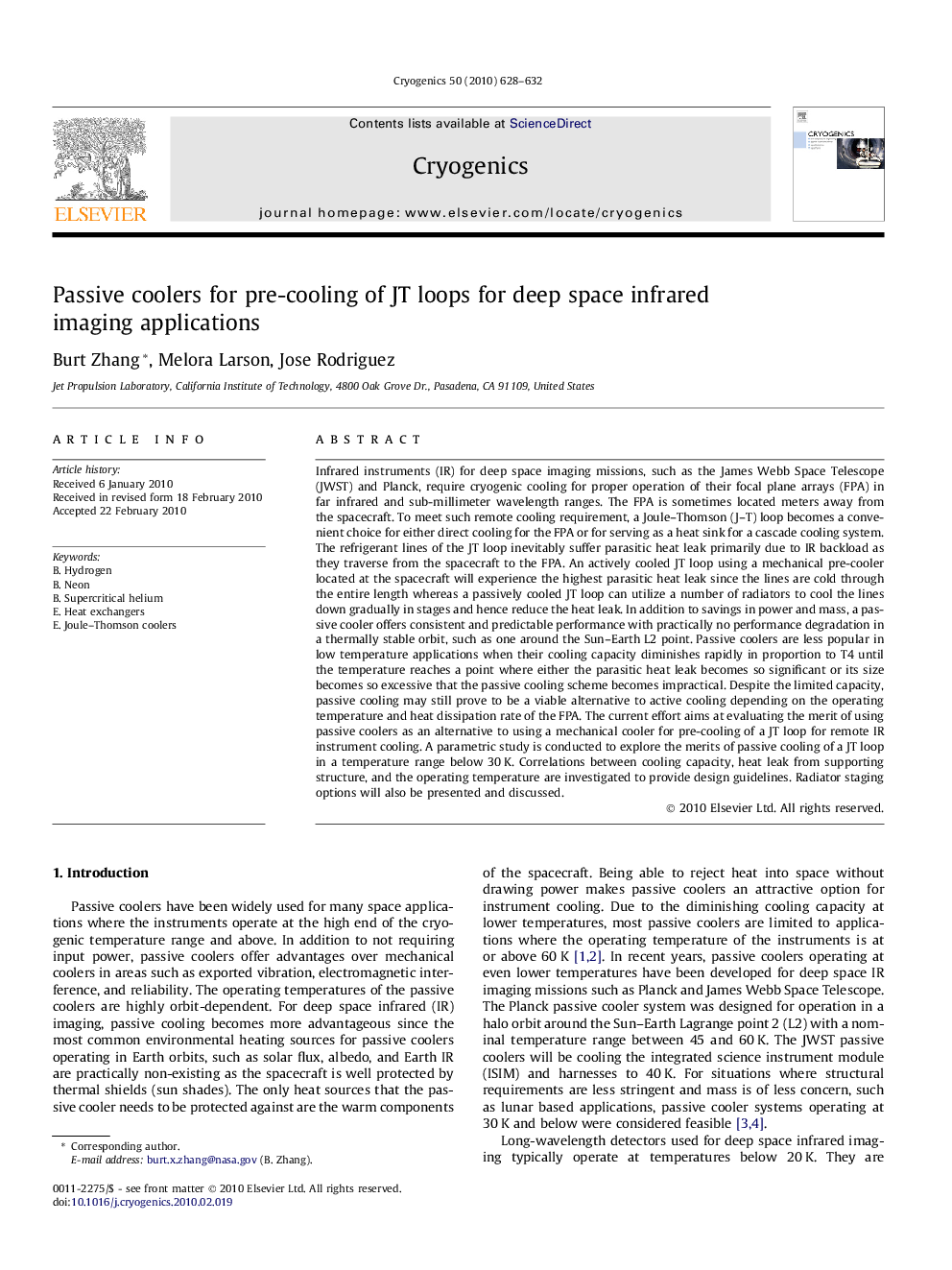| کد مقاله | کد نشریه | سال انتشار | مقاله انگلیسی | نسخه تمام متن |
|---|---|---|---|---|
| 1507976 | 993942 | 2010 | 5 صفحه PDF | دانلود رایگان |

Infrared instruments (IR) for deep space imaging missions, such as the James Webb Space Telescope (JWST) and Planck, require cryogenic cooling for proper operation of their focal plane arrays (FPA) in far infrared and sub-millimeter wavelength ranges. The FPA is sometimes located meters away from the spacecraft. To meet such remote cooling requirement, a Joule–Thomson (J–T) loop becomes a convenient choice for either direct cooling for the FPA or for serving as a heat sink for a cascade cooling system. The refrigerant lines of the JT loop inevitably suffer parasitic heat leak primarily due to IR backload as they traverse from the spacecraft to the FPA. An actively cooled JT loop using a mechanical pre-cooler located at the spacecraft will experience the highest parasitic heat leak since the lines are cold through the entire length whereas a passively cooled JT loop can utilize a number of radiators to cool the lines down gradually in stages and hence reduce the heat leak. In addition to savings in power and mass, a passive cooler offers consistent and predictable performance with practically no performance degradation in a thermally stable orbit, such as one around the Sun–Earth L2 point. Passive coolers are less popular in low temperature applications when their cooling capacity diminishes rapidly in proportion to T4 until the temperature reaches a point where either the parasitic heat leak becomes so significant or its size becomes so excessive that the passive cooling scheme becomes impractical. Despite the limited capacity, passive cooling may still prove to be a viable alternative to active cooling depending on the operating temperature and heat dissipation rate of the FPA. The current effort aims at evaluating the merit of using passive coolers as an alternative to using a mechanical cooler for pre-cooling of a JT loop for remote IR instrument cooling. A parametric study is conducted to explore the merits of passive cooling of a JT loop in a temperature range below 30 K. Correlations between cooling capacity, heat leak from supporting structure, and the operating temperature are investigated to provide design guidelines. Radiator staging options will also be presented and discussed.
Journal: Cryogenics - Volume 50, Issue 9, September 2010, Pages 628–632